The Crick at Regent’s Place
A strategic partnership between British Land and The Francis Crick Institute to create new fully serviced, flexible CL2 lab and write-up space with shared amenities at 20 Triton Street, Regent’s Place. Studio Sutton led the architectural and interior design of the fit-out from concept to completion, collaborating with Bulb Interiors & Laboratories.
Location
London, UK
Client
British Land and The Francis Crick Institute
Size
33,000 sqft
Photography
Vigo Jansons & Alex Sutton
The 33,000 sqft floorplate has been transformed into a flexible CL-2 wet laboratory and office space, designed to accommodate tenants of various sizes with minimal future modifications. It optimises internal efficiency and creates an amenity-rich environment that fosters collaboration and social interaction.



A welcoming first impression is created with a central breakout area located off the main lift lobby. This area includes a reception hub, a tea point, and various furniture settings, all visually connected to the lab environment through large windows that showcase ‘science on display.’
The design narrative focused on creating a warmer space that contrasts with the more technical and clinical attributes of the labs. The goal was to craft a timeless yet understated appeal that would attract a broad spectrum of tenants while subtly nodding to the spirit of science and innovation embodied by The Crick.

The aesthetic blends warmth with timeless design, achieved through natural timbers and a soft colour palette. A large timber-clad wall in the breakout area, enhanced with nano-perforations, improves acoustics while maintaining a clean, contemporary feel. Stainless steel accents subtly elevate the space, complemented by a cohesive lighting design featuring glowing LED linear and circular fixtures.
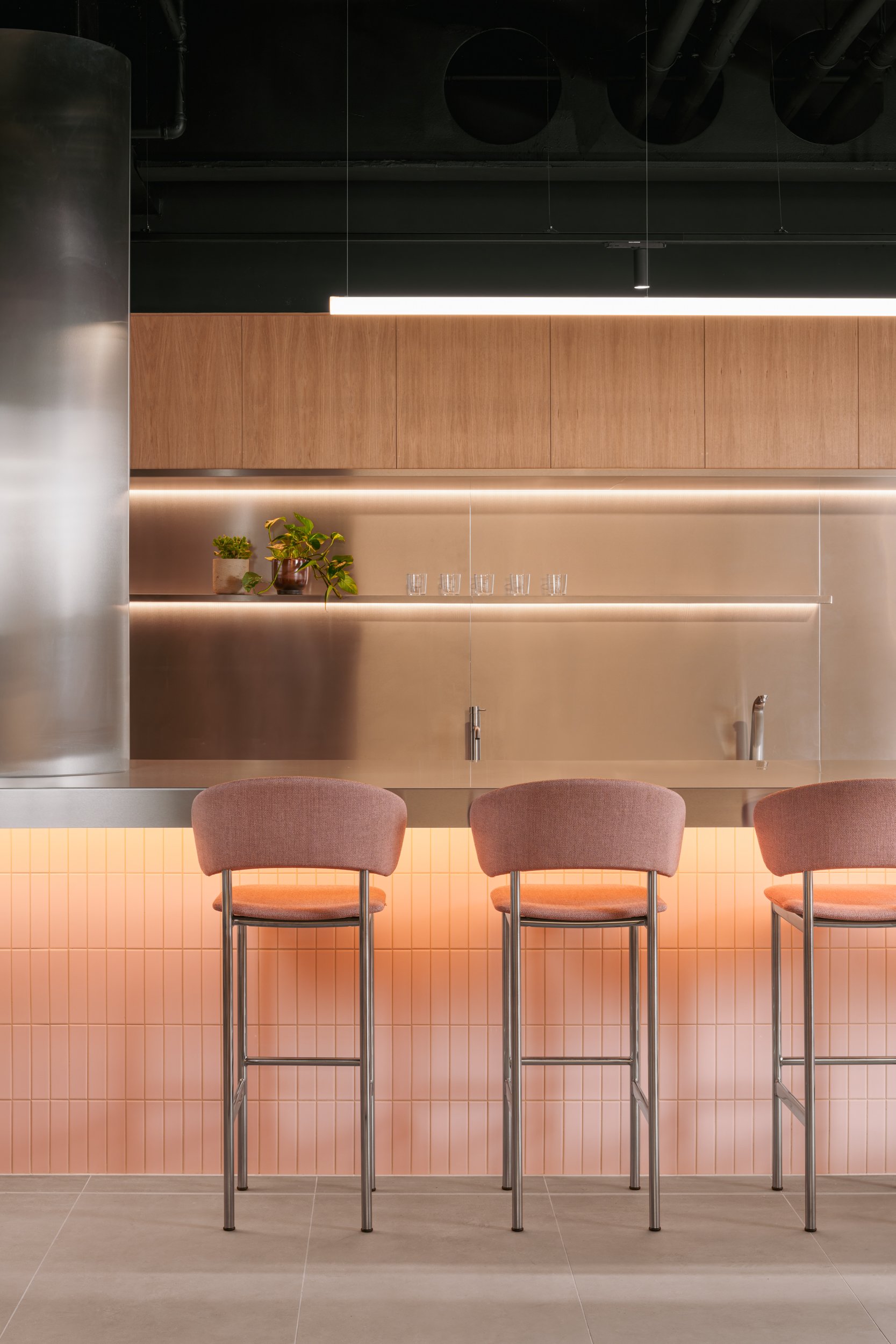
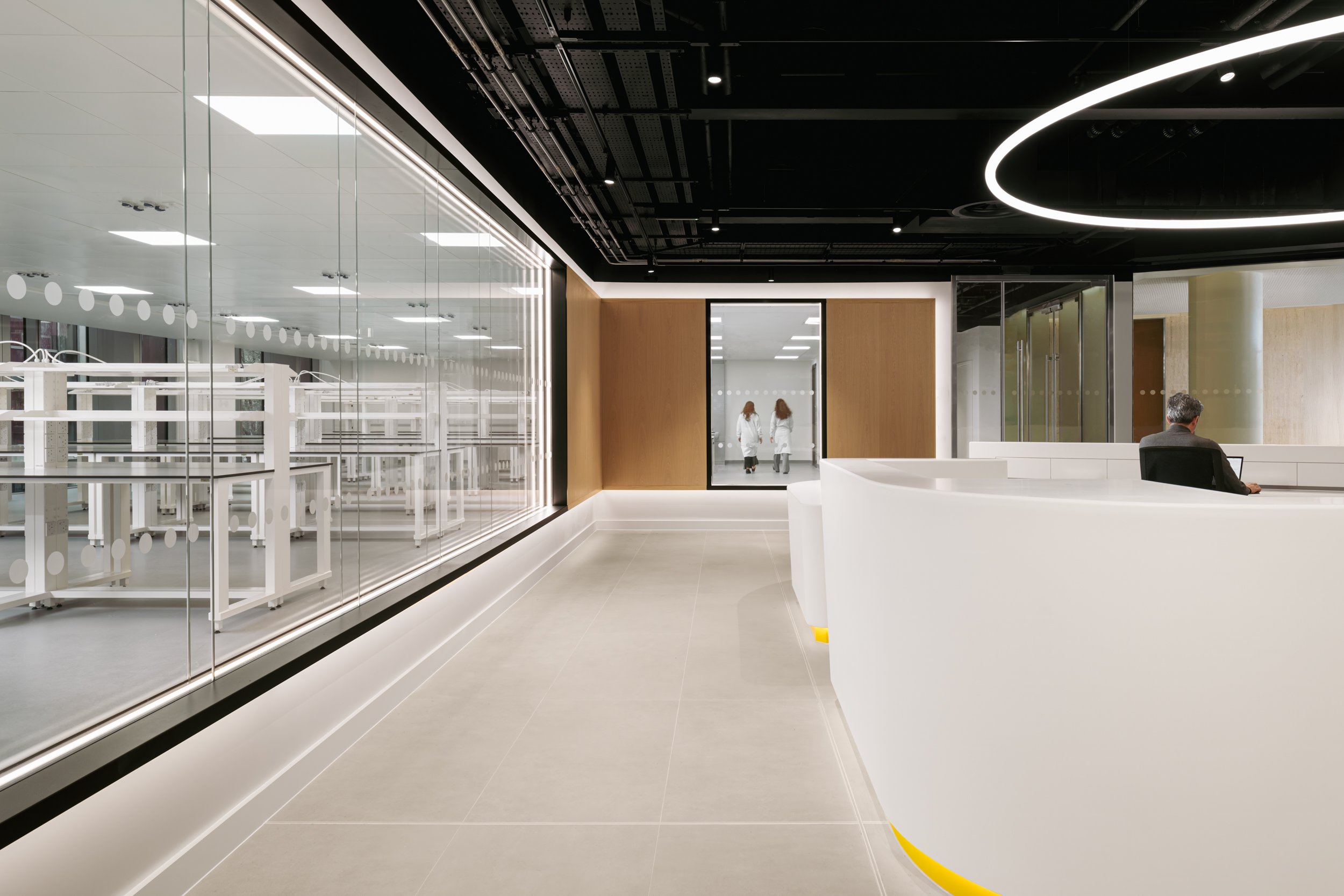
Black-sprayed soffits in the corridors contrast with the sleek, technical finishes of the lab and office spaces, creating a dynamic visual experience as users move through the floorplate.
Every element balances functionality and aesthetics, with design details shaped by an in-depth understanding of lab requirements. For instance, each doorway features a magnetic write-on panel, providing a structured space for notices and safety information without marking the walls or glass. Bespoke lightbox signage enhances wayfinding, integrating a safety feature that glows red in response to gas detection systems.
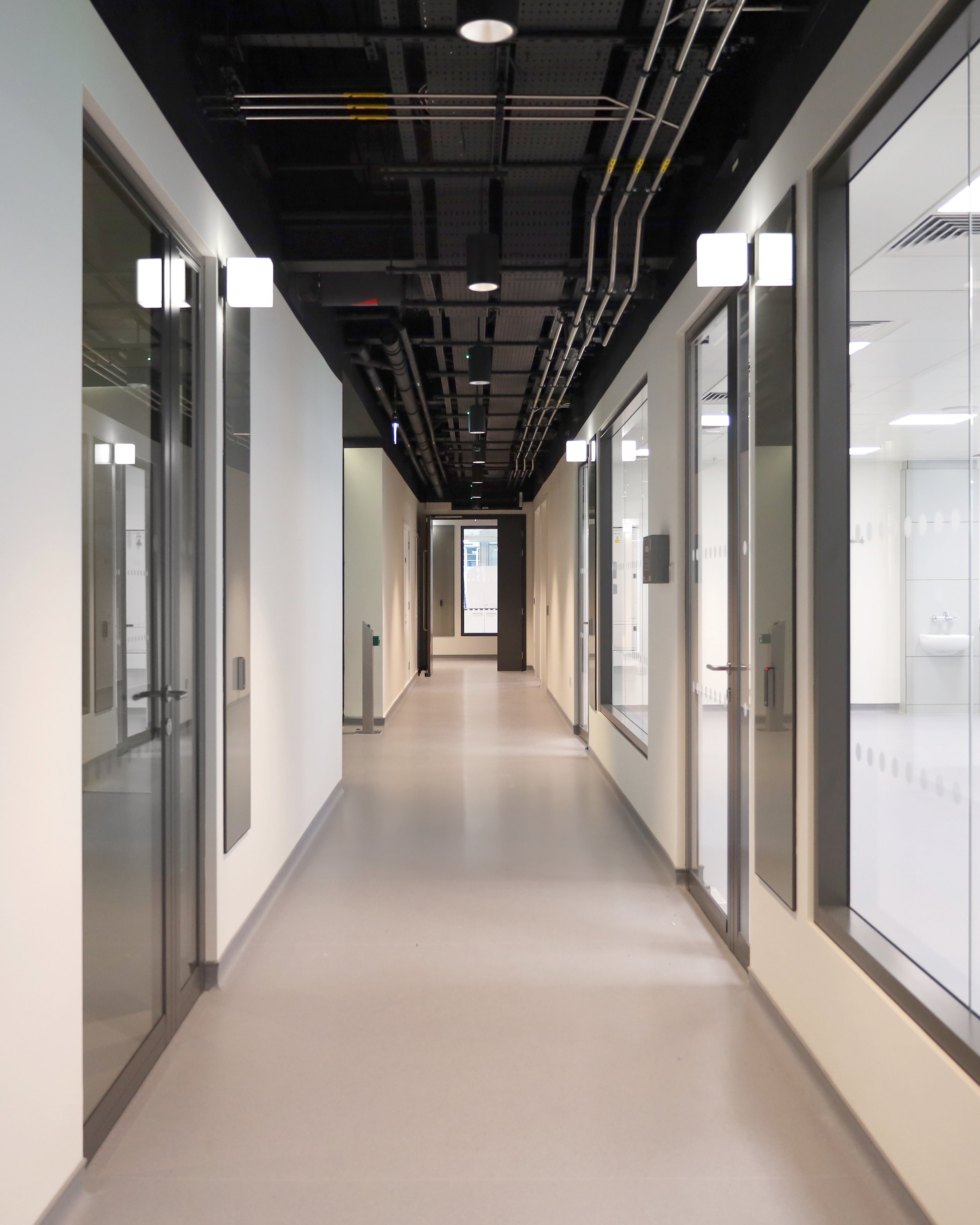
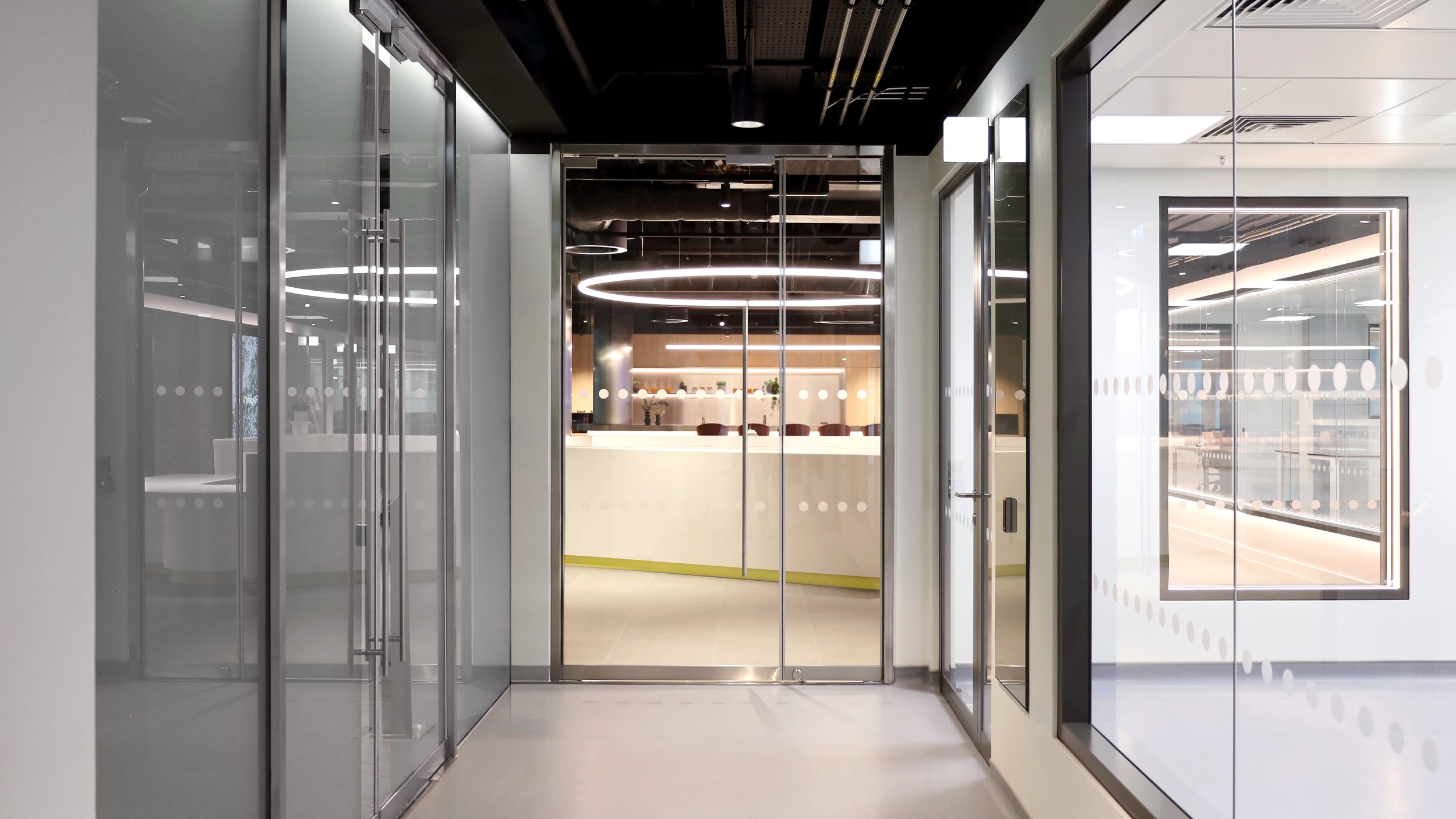
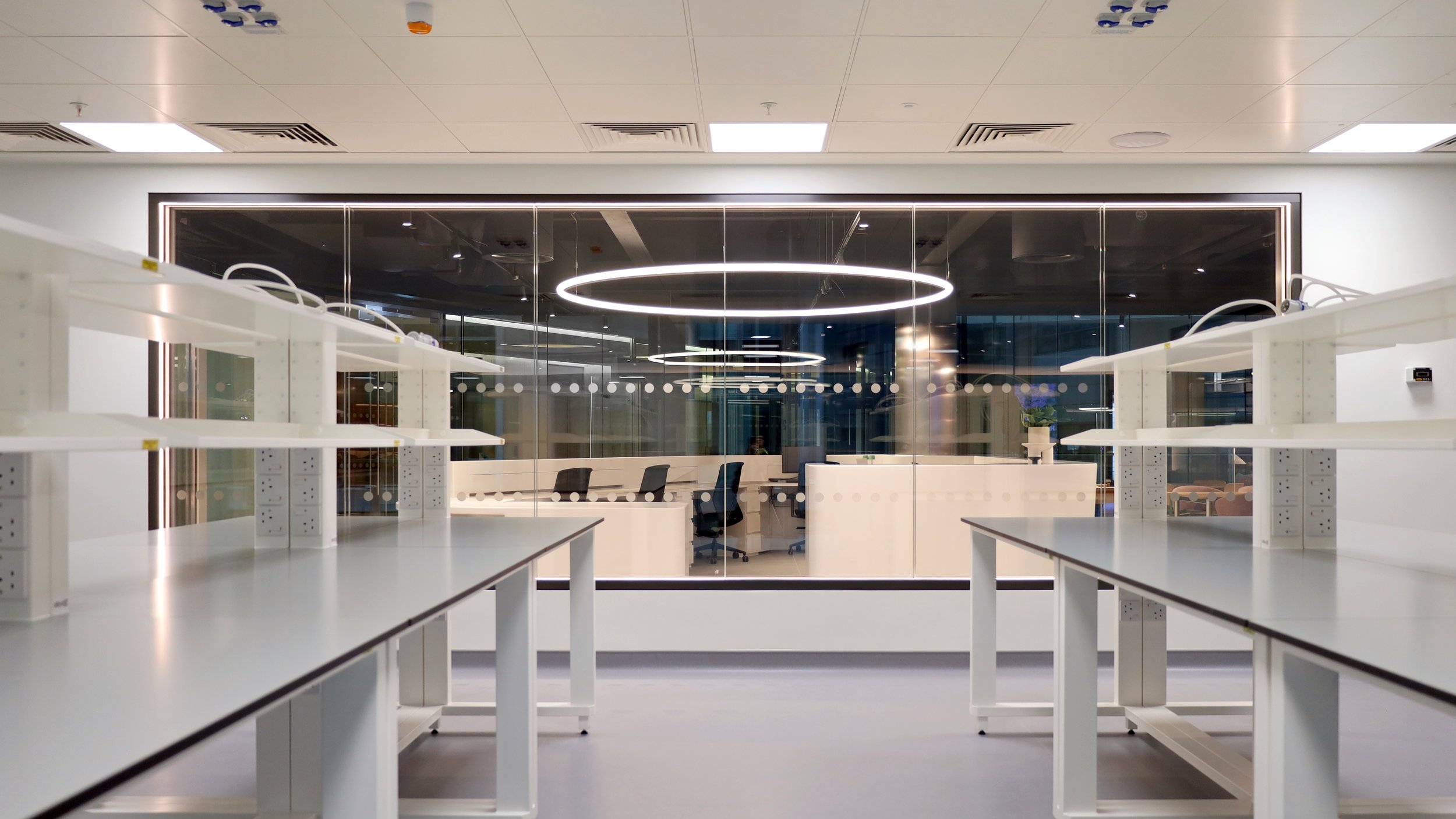
The lab spaces connect directly to office write-up areas via glazed doors and large windows, enhancing transparency and daylight penetration. Flexible lab benching sits beneath a modular ceiling system integrating lighting, air conditioning, and service tiles for power, data, and gases. The plug-and-play design ensures adaptability and longevity.
The floor features bio-attributed vinyl, replacing fossil oil with renewable biomass, minimising its carbon footprint. Low-vibration zones support precise experimentation, while a neutral palette of whites and greys contrasts with the bolder corridor and communal areas.
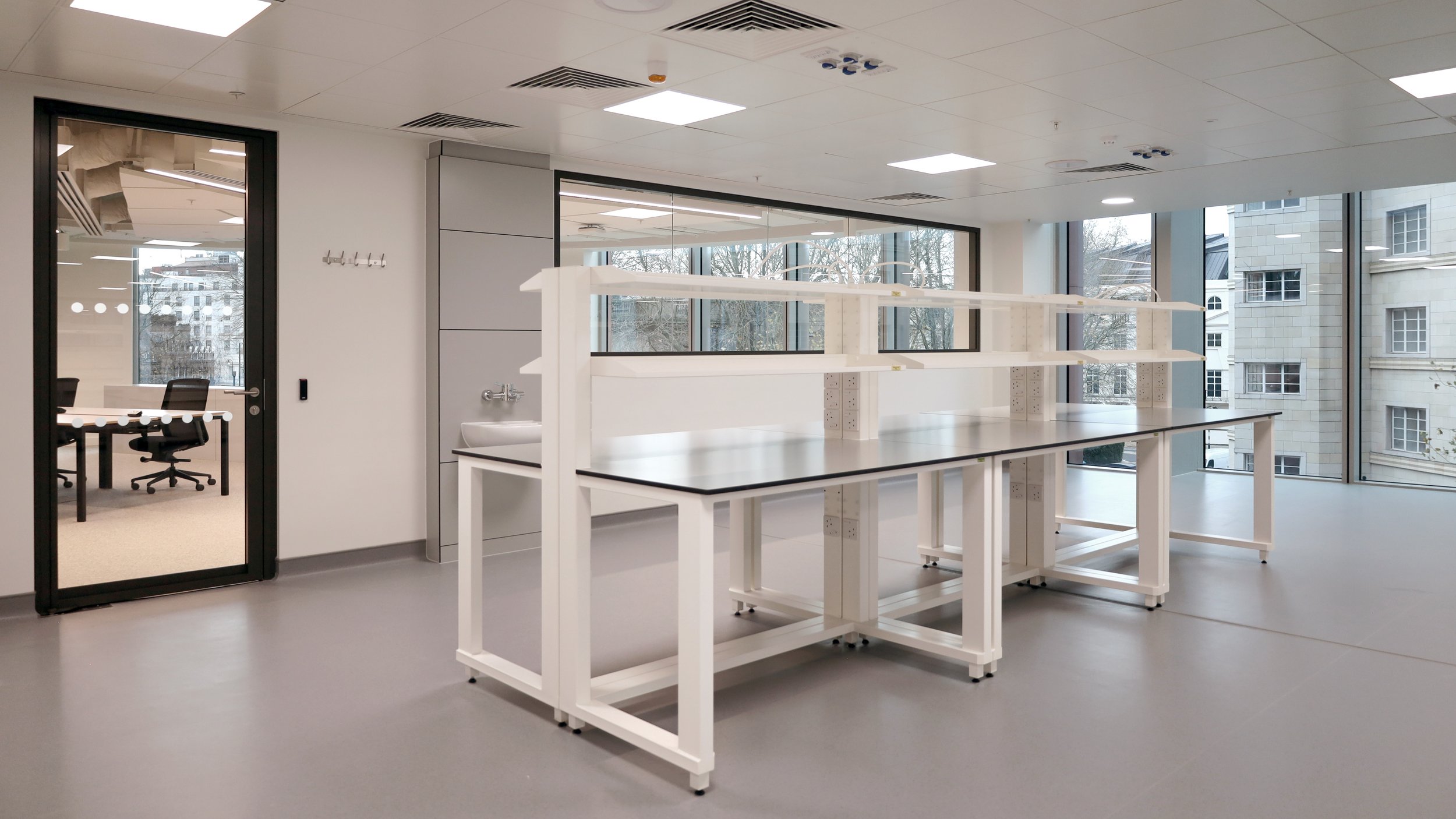

Further opportunities for breakout is provided adjacent to the atrium. Here, a striking feature curtain in deep blue lines a connecting space with high booths for touchdown or collaborative work. Curtains are used to introduce colour and further softness in these non-lab areas as well as conceal riser access doors.
In this instance, the blue complements the colourful tones of the wall artwork of the main lobby of the building below and adds directionality to the space that is otherwise constrained by the wider building atrium.
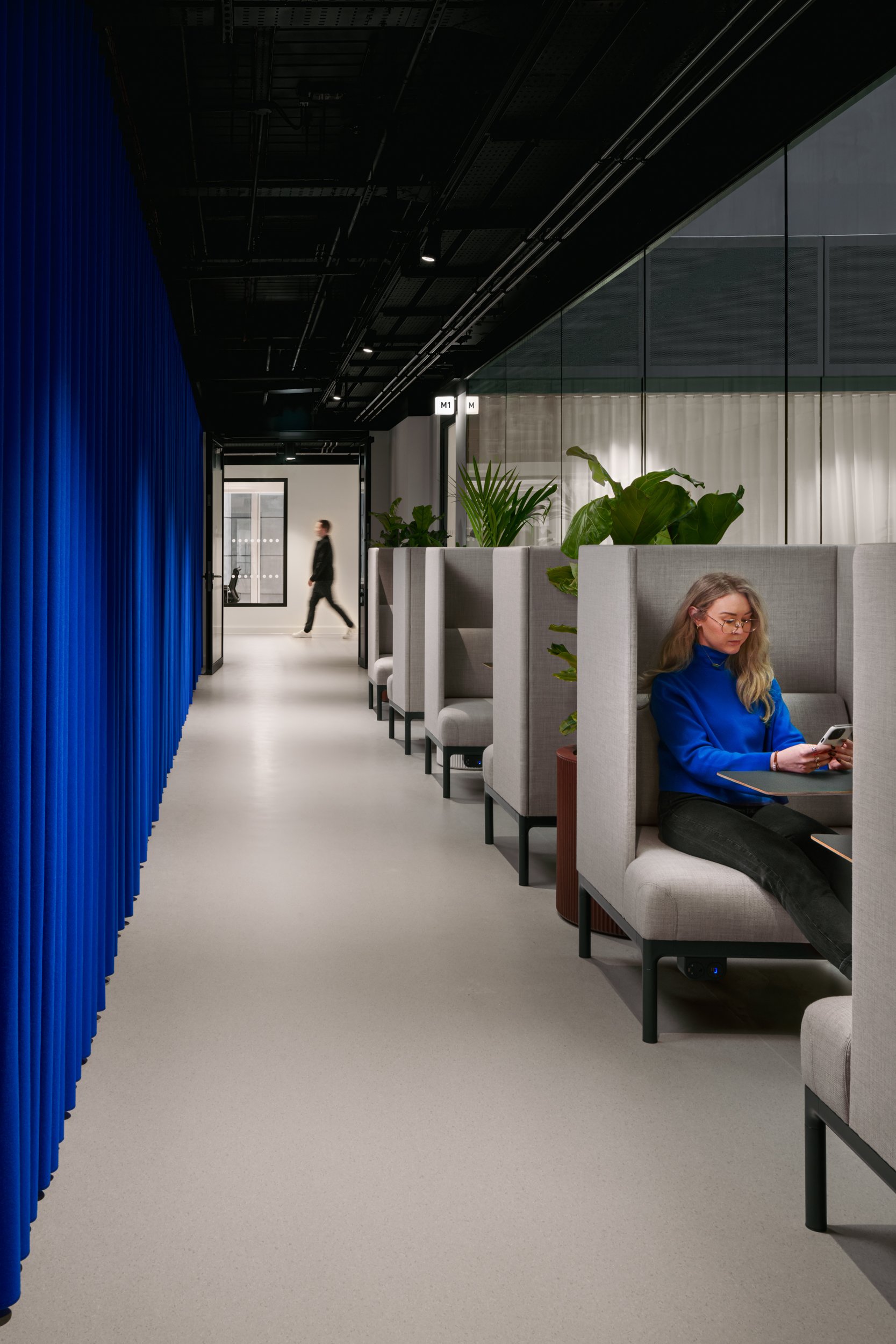
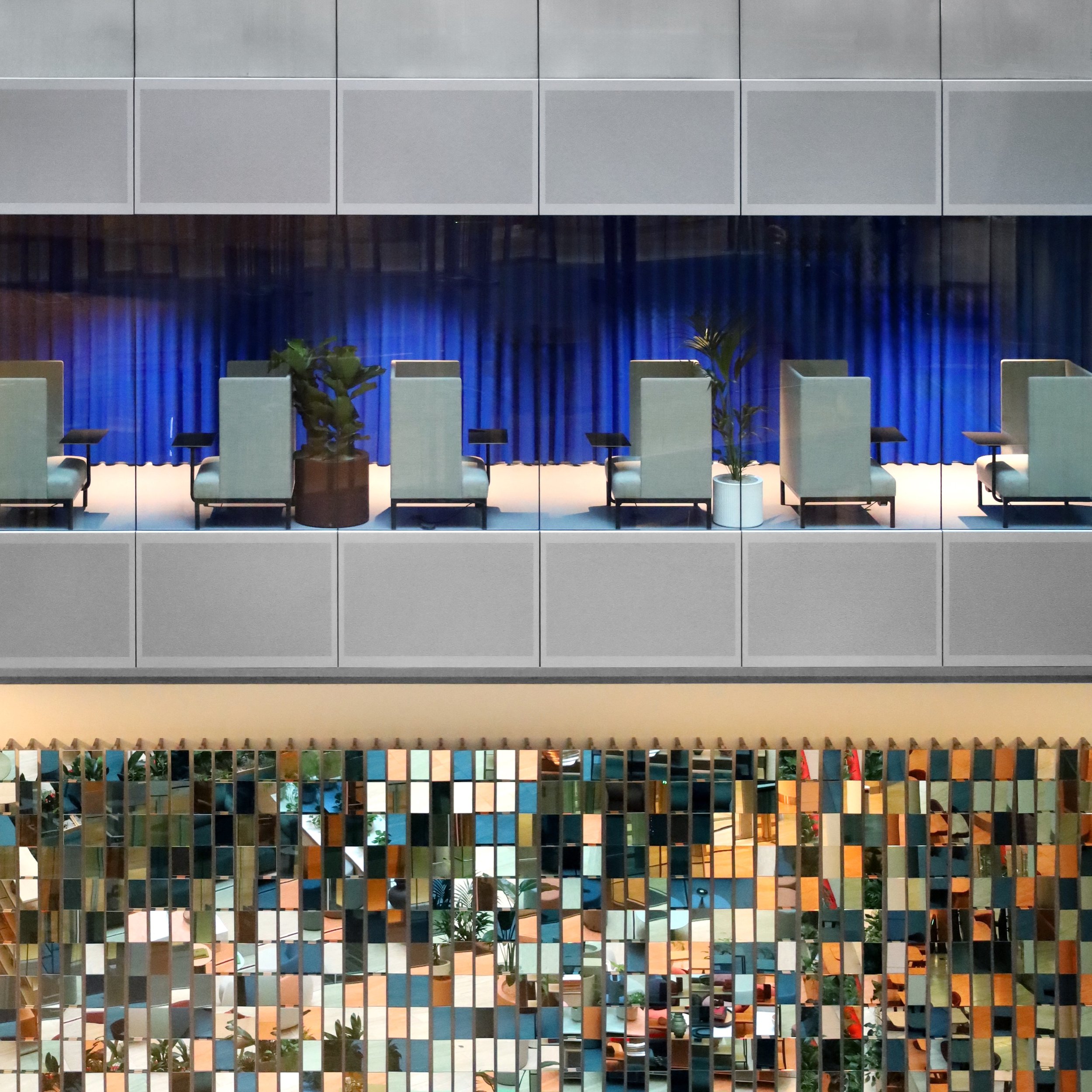
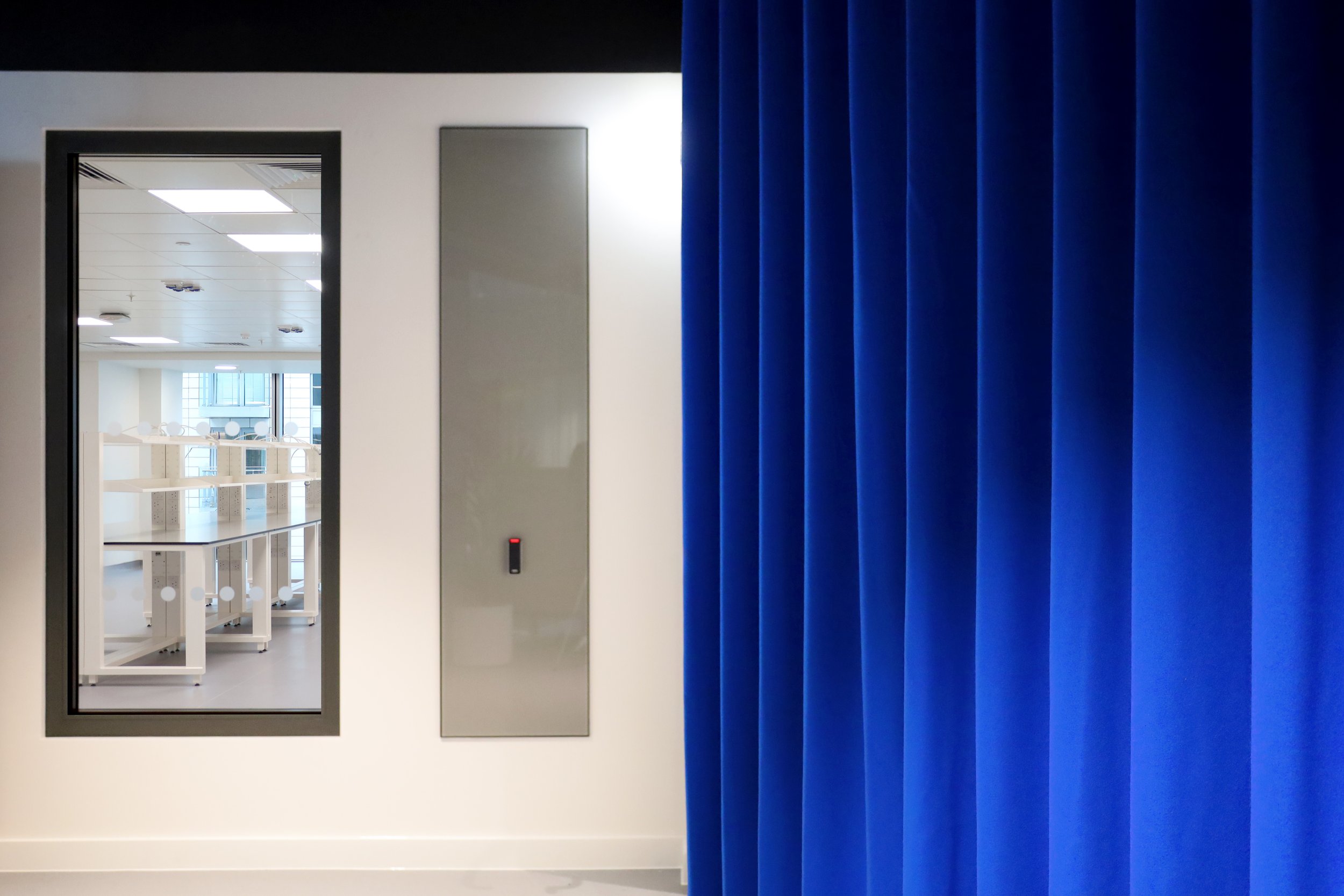
Visually connected to the neighboring collaboration zones, a series of shared meeting rooms are provided. Fabric-wrapped acoustic panels and privacy curtains add softness and color while ensuring optimal sound control and discretion.
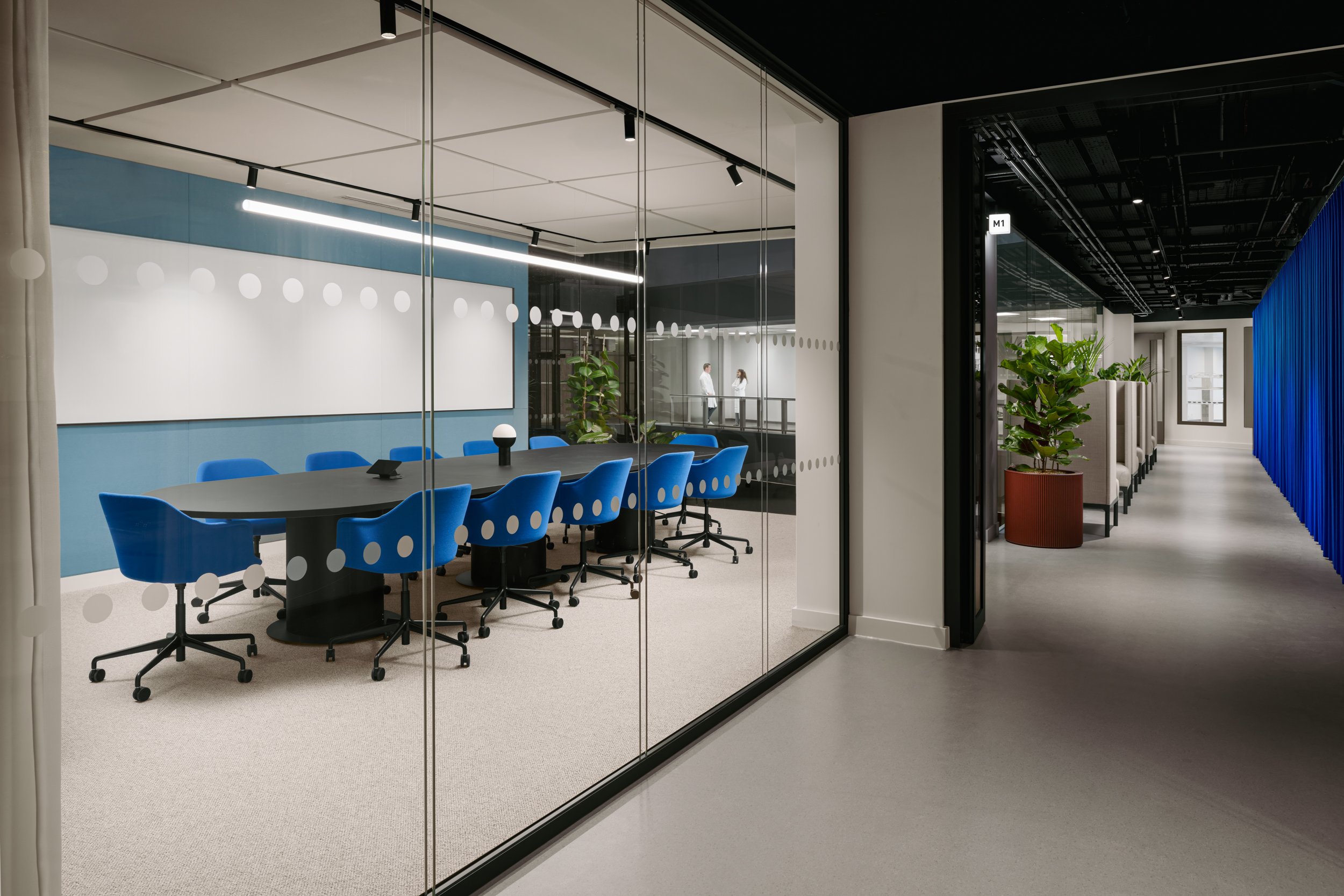
Each meeting room is equipped with state-of-the-art AV technology, including large screens, PTZ teleconference camera systems, and seamless connectivity, catering to virtual collaboration.
Boardroom-style tables paired with soft, club-like chairs provide a balance of professionalism and comfort, creating a suitable environment for strategic discussion and collaboration.


“By bringing the expertise in technology and infrastructure of the world- renowned Francis Crick Institute, we are opening the door to the next generation of global life science businesses – helping them to go faster and further than ever before."
Stephen Mayhew - Chief Business Officer - The Francis Crick Institute
“The completion of this pioneering, highly flexible lab space at Regent's Place marks an exciting next chapter for lab space within the Knowledge Quarter. I am eager to see the innovative companies, groundbreaking research, and scientific advancements that will emerge from this space."
Simon Hepher-Davies - Head of Regent’s Place Asset Management - British Land
Project Credits
Client:
British Land
The Francis Crick Institute
Architecture & Design:
Gensler (RIBA Stage 2)
Studio Sutton (RIBA Stage 2-6)
Project Manager:
3PM
Contractor:
Bulb Interiors & Laboratories
Technical Services:
Integra IQ
Conquest Electrical
Arup
Furniture:
The Furniture Practice
Fire Engineer:
Semper
Building Control:
Sweco
Photography:
Vigo Jansons
Alex Sutton

